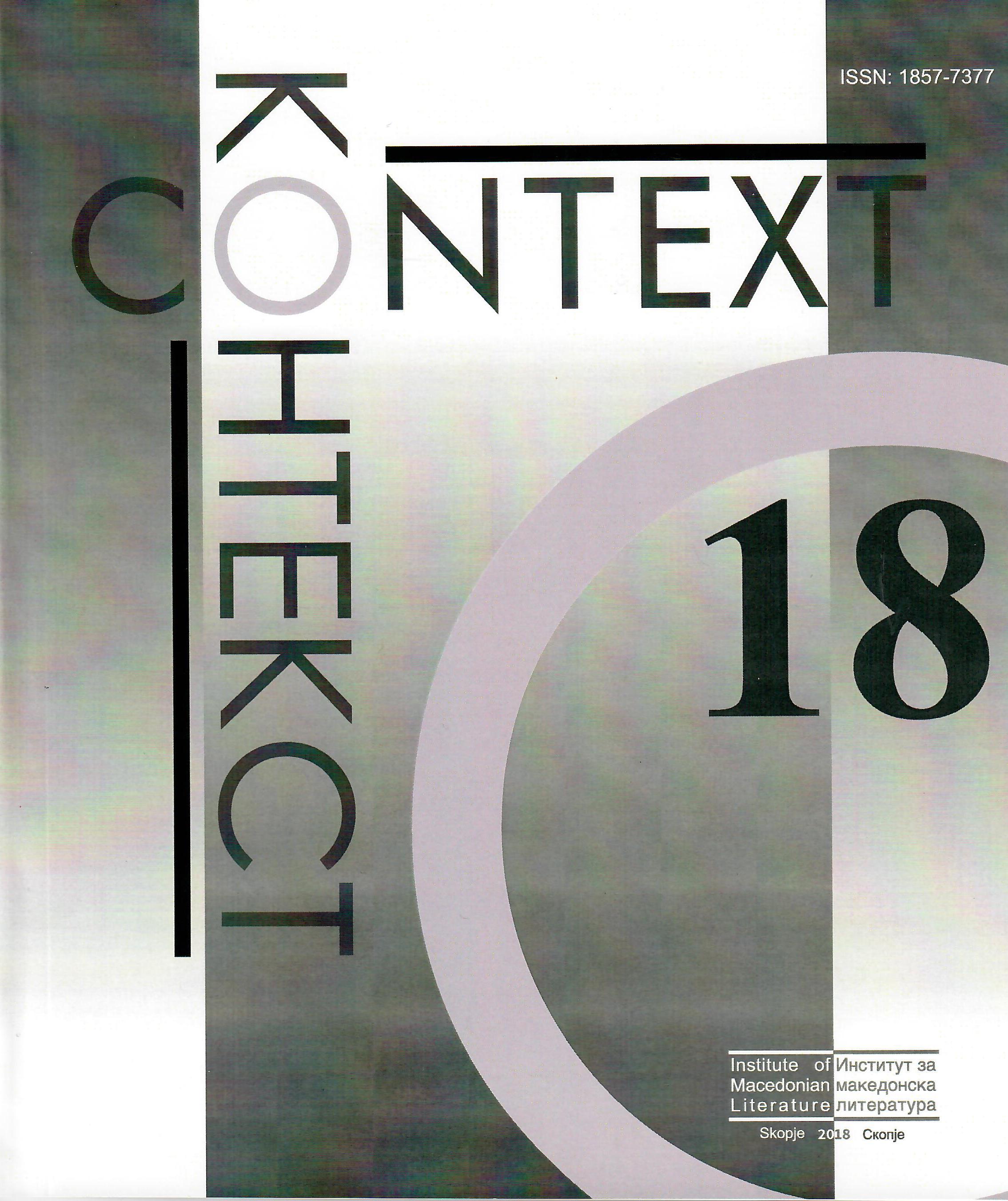Богородица и народната лирика: јазично-културолошки (етнолингвистички) слики на света дева Марија во македонската народна песна
The Holy Virgin Mary at Traditional Folk Lyrics
Cultural-linguistic (Ethnolinguistic) Images of Holy Virgin Mary in Traditional Macedonian Songs
Author(s): Mirella MakuratSubject(s): Christian Theology and Religion, Macedonian Literature, History of Religion
Published by: Институт за македонска литература
Keywords: Theotokos; Macedonian folk songs; Slavic mythology; Тhree Marias; Bela Marija (White Mary); Ognana/Ognena Marija (Fiery Mary, Saint Marina)
Summary/Abstract: The purpose of this article is a cultural-linguistic (ethnolinguistic) analysis of the images of the Holy Virgin Mary, derived from (or - contained in) the Macedonian traditional ritual and religious folk lyrics, texts collected at 2nd half of the XIX and XX centuries. Also, the goal is to answer the question about the character(s) of the Holy Mother of God in those songs, what kind of images the people express by them, how Holy Virgin Mary was perceived and what their genesis is. In addition - and what other characters are "hiding" under the name Mary? As the main method of presentation and explanation of the material I use ethnolinguistic analysis of folklore text, additionally with a diachronic-comparative method. Additionally, my research is based also on Orthodox theology and folkloristics. Summarizing the analysis of explicit material I compose the Macedonian cultural-linguistic profiles of the Holy Virgin Mary contained in the text of Macedonian traditional ritual and religious songs. And so the Mother of God appears as the light, Holy Virgin Mary, the Purest, Panagia, Hyperagia (All-holy), Mother of God, with child Christ in her arms, his nurse and nursing mother, Dear Mother, single Mother, leeches, accompanied only by shepherds, goatherds, tailor or girl Alamanka. What is interesting is that the character of the Mother of God in this "Christianized" Macedonian folk, genuine lyrics never appear with St. Joseph, which is a typical representation of the Holy Family in the Catholic Church, but foreign to Orthodoxy. However I found a song with character of St. Joseph, accompanying the custom of walking with a crib represented Nativity scene (vertep), which was most probably borrowed from the Catholic tradition. The language of this song is with Church Slavonic elements (meanwhile traditional songs are in local dialects) and it probably appeared among the people under the influence of the clergy. She is Beautiful Maria, Bela Maria (white, as fog, snow, swan), in a wonderful shirt, makes a godmother from the fairy (vila) (in more archaic, close to mythological songs), or the godfather of Child Jesus is St. John the Baptist. She also resembles a villa, she is ruler of the nature. She resides there - on that side, in another world, in wet places (river, sea, shrub), walks along the seas. Most often, she appears on the top, in the sky, in the mountain, in par-adise, on a green meadow or under the green tree, on a table or in a soft bedclothes. She mediates between the worlds. Keeping keys from heaven. She (with the Child), together with St. Elijah and St. Nicholas are the most important saints. She is the sister of the saints, the founder and the abbess of the monastery. She is a church itself. Benefactor for the people. She is blessing but also punishing. Manages the saints and angels, defines them functions. She is Christian woman (she confesses and receive the Eucharist), spreads Christianity, is a protector of Christians, but also a guardian of the fulfilment of God's commandments. She has characteristics of a human being - she cries, complains, orders (but we do not see her happy or cheerful in the folk lyrics). It also appears as Ognana/Ognena Maria - the Sun Bride of St. Elijah ("successor" of the god of thunder and lightning, Perun), she's characterized by a strong fire. It should be noted that Ognena Mary, among the Orthodox Southern Slavs tradition also named Saint Marina the Great Martyr, in the Catholic Church known as Saint Mar-garet of Antioch (conquering the dragon). Thus strongly represented in the Macedonian folk lyrics the character of Ognena Maria is the contamination of the Tree Christian saints (Tree Maries - the Holy Mother of God, St. Marina and St. Mary Magdalene) with Sun Bride from the topic of Marriage of the Sun, or bride / victim of Perun or a dragon from other layers of Slavic and Balkan mythology. I can conclude that the image of the Virgin is not a straightforward, simple Christianized "mask" of goddesses, villas and other mythological creatures from the old days. Syncretistic "gathering" the old beliefs, assuming the functions and matching characters of pre-Christian mythologies and the Christian Orthodox of the Mother of God, introduces a new, unique quality. Although the centre of Christianity is the Lord Jesus Christ, in the vernacular religion of the Orthodox Macedonians, but similarly with other Orthodox Southern Slavs, the Holy Virgin Mary also plays a very important role in their culture and religious life.
Journal: Context/Контекст
- Issue Year: 2018
- Issue No: 18
- Page Range: 37-54
- Page Count: 18
- Language: Macedonian

